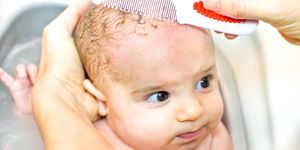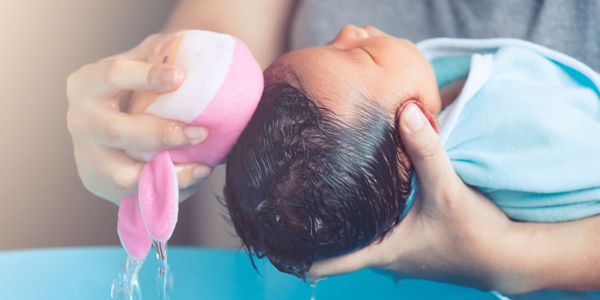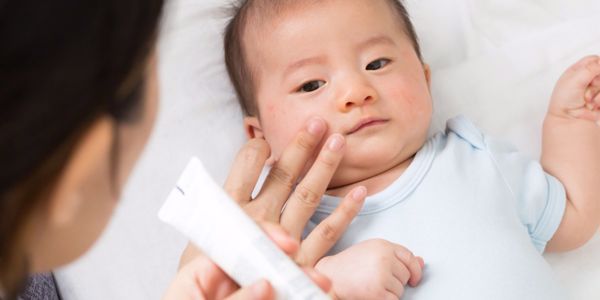As babies transition from living in a water-like state to being earth-side, we see some skin changes. Some of these are as simple as baby acne, little rashes here and there, losing the hair on their body or head, and more. One that 70% of infants experience is called Cradle Cap. Cradle Cap is called Seborrheic Dermatitis and can occur on the head, face, behind the ears, and in the diaper area. In most cases, babies will develop a Cradle Cap between 3 weeks of life and two months of life, but it can last through the first few years in some cases.
Why Does It Happen?
Cradle Cap is not harmful or contagious, so it can simply be left alone and will go away over time. Although not infectious, Cradle Cap can spread from one area of the baby to another, and it can look like the scales appearing on the forehead, face, armpit, and even the diaper area. Nobody knows the exact cause of Cradle Cap, but some theories are that it comes from excess hormones, an excess of a natural yeast on everyone’s skin, and the overproduction of a newborn’s oil glands. If it affects your baby, just note that you have done nothing wrong. It is simply a phase your baby is going through.
What Can I Do to Help?
As stated above, in most cases, you can ignore the Cradle Cap, and it will go away on its own, but for many, simply ignoring it is difficult. If you want to help get rid of it, there are a few things that you can try. The first is to wash your baby’s hair more frequently. Every other day should do the trick. That way, you will not dry out their skin. You can do this wash in the tub or your sink if you don’t want to do the entire bathing process that day.
Simply click here and enter your details for your chance to win a $250 Amazon spend today!
Another thing that can help is using a mild baby shampoo and then a gentle and soft brush or baby comb to loosen up the scales with massage during the wash. Lastly, putting some coconut or mineral oil on the Cradle Cap the night before washing and letting it soften up the scales can help them become looser and easier to massage during the bath the next day. It is important to note that picking at or scratching the dry scales can hurt your baby and lead to infection. Even when you are gently massaging them out with a brush, it should not be aggressive. Sometimes, a baby’s hair might fall out with the cradle cap. Although this can feel disappointing, it will grow back, and there is no cause for alarm.
In most circumstances, the Cradle Cap disappears quickly and will not return. If you are worried about it returning, you can continue to wash your baby’s hair more frequently after the Cradle Cap has gone away.
When to See a Doctor
For the most part, Cradle Cap is harmless and should not cause any issues, but for some, going in to see your care provider might be a good idea. If the cradle cap becomes crusted, weepy, or has bumps, if there is a rash in places other than the scalp, if the Cradle Cap appears to be causing discomfort to your baby, if there is any type of fluid oozing from the scales, if there is swelling, and if there is a foul odor it is a good idea to get your baby looked at. Usually, your care provider will prescribe an anti-fungal or corticosteroid cream and check for any other condition or signs of infection.
Knowledge is power, like anything with pregnancy, birth, and postpartum. It is essential to know about Cradle Cap so that if your baby is one of the 70% that get it, you will know what to do and when it’s time to get a pediatrician’s perspective.






